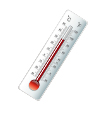
2024.01.31
Weather Conditions and Forecasts
Meteorologic characteristics
Mt. Fuji is a freestanding mountain with an altitude of 1500 to 2500 meters at the general trail head, and a summit exceeding 3700 meters. Owing to the complex interaction of the winds from Suruga Bay and Sagami Bay, and the winds from the north, the airflow is not stable at high altitudes. The characteristic mountain waves have caused aircraft crashes in the past. It is characterized by harsh weather conditions.
There is a large difference in weather and temperature from the foothills and the halfway point to the summit. At the upper point, weather changes suddenly owing to the clouds surrounding Mt. Fuji. You should be properly equipped to cope with rain and wind, and check weather information before climbing.
*Average temperature: "Guidelines for Safely Climbing Mt. Fuji"
There is a large difference in weather and temperature from the foothills and the halfway point to the summit. At the upper point, weather changes suddenly owing to the clouds surrounding Mt. Fuji. You should be properly equipped to cope with rain and wind, and check weather information before climbing.
- Owing to the difference in altitude between the 5th station and the summit, there is a large temperature difference(temperature lowers at a rate of approximately -0.6 degrees C per 100m of altitude). At the summit, the temperature is close to 0 degrees even in summer. When the wind is blowing, you will feel even colder at the same temperature (approximately -0.1 degrees C wind chill per 1m/sec of wind velocity)
- The temperature difference between the summit and central Tokyo is about 23 degrees, and that between the summit and Lake Kawaguchi is 16 degrees.
- Before sunrise is the time when the temperature is the lowest in a day. The longer you wait for the sunrise, the more likely you are to suffer hypothermia.
- On Mt. Fuji in summer, cumulonimbus clouds are likely to develop in the afternoon, thereby increasing the risk of lightning and squalls. There is no woodland or shelter to evacuate to from thunder at the upper point, so you must start acting early to take refuge.
- When the front line passes, the wind and rain become especially intense. The wind blows strong in general, so you cannot prevent rain with an umbrella or vinyl rainwear.
*Average temperature: "Guidelines for Safely Climbing Mt. Fuji"
Weather information to be checked before climbing
The general weather forecast is for the foothills, but it is very different from the weather conditions on the mountain. When you check weather information, you should also look into the short-range precipitation forecast (shown on the front page of the website during the climbing season) and thunder forecast (Nowcasts).
In the vicinity of Mt. Fuji, private weather forecast companies provide weather forecasts for the summit as well as weather information and forecasts for the 5th station and the foothills.
If bad weather is expected on the day of climbing, you won't be able to see beautiful scenery: instead, you could face danger. The sky changes but mountains do not move, so you should wait for the next opportunity.
In the vicinity of Mt. Fuji, private weather forecast companies provide weather forecasts for the summit as well as weather information and forecasts for the 5th station and the foothills.
If bad weather is expected on the day of climbing, you won't be able to see beautiful scenery: instead, you could face danger. The sky changes but mountains do not move, so you should wait for the next opportunity.
[!]Check weather information before climbing!
The weather changes suddenly on Mt. Fuji. Be sure to check the weather information at the trail head before climbing.
You can check the precipitation forecast for the next 15 hours and the status of warnings and advisories on the home page.
The weather changes suddenly on Mt. Fuji. Be sure to check the weather information at the trail head before climbing.
You can check the precipitation forecast for the next 15 hours and the status of warnings and advisories on the home page.


